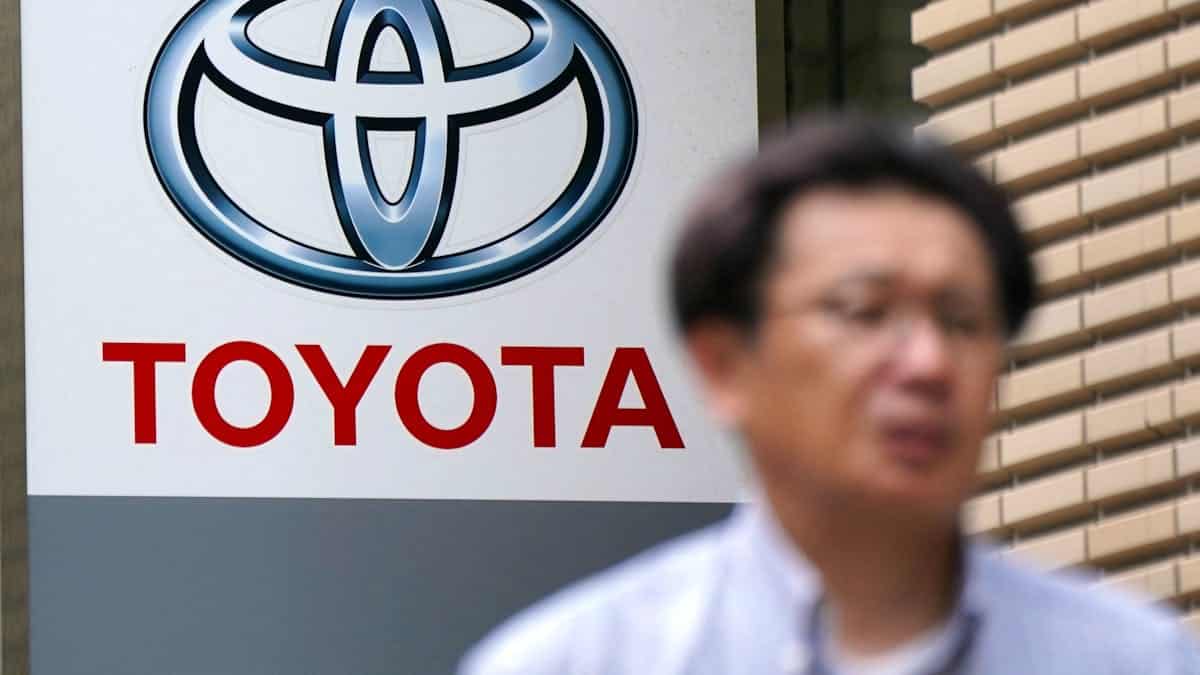Japanese car giant Toyota, world number one, lowered its net profit forecasts in 2025-2026 on Thursday, in a “difficult environment” in particular leaded by American customs surcharges which should cost it up to some 8 billion francs over the exercise.
The manufacturer expects a net profit of 2,660 billion yen (15 billion francs) for the offbeat exercise started in April, against 3,100 billion yen previously estimated. This represents a collapse of 44% over a year.
“Due to the impact of American customs duties and other factors, the real results recorded a drop in operating profit, and the forecasts were revised downwards,” said Toyota.
Withdrawal action
The manufacturer’s action closed up to 1.50% in Tokyo after dropping up to 2.4% just after the publication at midday.
Toyota’s net profit in the first quarter (April-June) melted from 36.9% to 841 billion yen (4.6 billion francs), with profitability scored by the cost of American customs duties. And even though its quarterly turnover was maintained (+3.5%, at 12,253 billion yen, or 67 billion francs).
Japanese automobile exports to the United States-key market where Toyota has almost a quarter of its sales-have been imposed since April by Washington from surcharges by 25%, in addition to 2.5% already applied previously.
Uncertain calendar
Following an agreement concluded at the end of July with Washington, Tokyo claims to have obtained that the total customs duties applied to the automobile are reduced to 15%, but the implementation calendar remains uncertain.
Throughout the year 2025-2026, Toyota estimates that American customs surcharge will start 1,400 billion in operating profit, a cost equivalent to 7.6 billion francs.
For her part, Honda, number two of the Japanese automobile, saw its net profit collapse in half in the first quarter of its offbeat exercise. Honda is nevertheless able to resist better than its competitors: it makes locally in its 12 American factories more than 60% of the vehicles it sells in the United States, the highest percentage of Japanese manufacturers, recently estimated Tatsuo Yoshida, Bloomberg Intelligence analyst.
Conversely, of the 2.33 million vehicles that Toyota sold in 2024 in the United States, only 1.27 million were produced there. Toyota certainly has eleven factories in the United States, the most recent of which is a battery factory for electric vehicles and hybrids in North Carolina.
Strongly established in Mexico
But it is also strongly established in Mexico, as part of severely disturbed cross -border production channels: cars and parts from Mexico and Canada are now taxed at 25%, even if softening is fitted out.
At the same time, Toyota intends to strengthen in China, a crucial market where its sales had plunged last year in the face of the sharp competition of Chinese manufacturers, including Byd, champion of the electric car.
To cope with it, the Japanese group announced in March the construction of an electric car factory in Shanghai, nesting the American plunge Tesla.
Finally, Toyota announced in early June his project to take control of a subsidiary, Toyota Industries, of which he only owned 23% and which provides him with components and equipment. It would therefore have left the scholarship.
For Toyota, the objective of the operation is to strengthen the management of its supply chain.
But the amount he proposes to devote to the acquisition of Toyota Industries has aroused a keen dissatisfaction with part of the shareholders of this subsidiary. The latter denounced the opacity of the operation and the underestimated valuations, provoking debates on the governance of the group.

